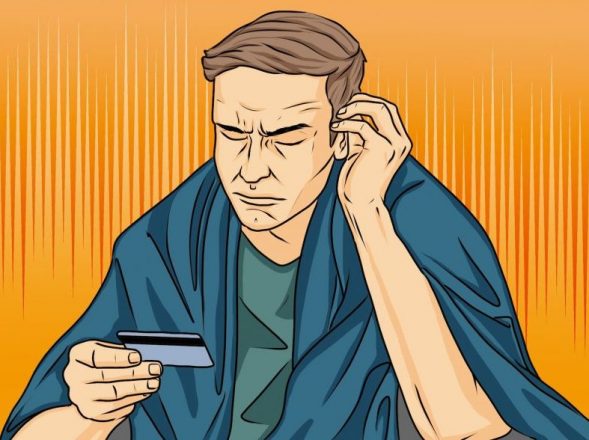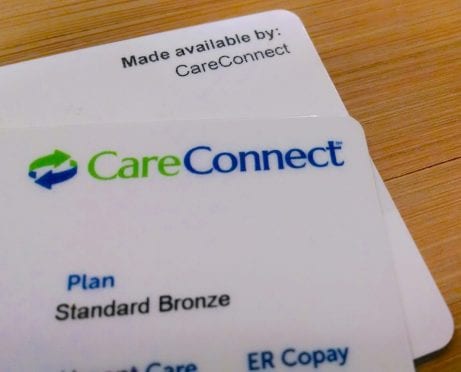
Jonan Everett
 One quick search for “health insurance” on GoFundMe, a popular crowdfunding website, and more than 181,000 results appear. Hundreds of donors from around the world back individuals to the tune of tens of thousands of dollars in order to help friends — and sometimes even strangers — pay their medical bills.
One quick search for “health insurance” on GoFundMe, a popular crowdfunding website, and more than 181,000 results appear. Hundreds of donors from around the world back individuals to the tune of tens of thousands of dollars in order to help friends — and sometimes even strangers — pay their medical bills.
Medical crowdfunding is a relatively new phenomenon. But with increasing health insurance deductibles and premiums, stagnant wages, and an average individual savings balance of 6.2 percent of income, it has become a common solution to a massive nationwide problem.
These grim facts show that one trip to the emergency room can send the average American into bankruptcy. With the advancements in technology and the widespread use of social media, crowdfunding has become a popular way to raise money for charity and for new ideas. And now, it’s raising money for health care.
Promote Your Crowdfunding Campaign — Create a Free Account >>
What Is Crowdfunding?
Crowdfunding has been around for centuries. It’s just never been as effective as it is today.
Visit any city in the world with a public transportation system. Chances are you’ll encounter somebody addressing the train car with their story and a request for financial assistance, followed by the passing of a hat.
But the ability to crowdfund online is the key to most campaigners’ success. Whereas solicitors on the subway will get pocket change, online campaigners craft their story with photographic evidence. They tap their social network of friends and “friends of friends,” and can accept credit cards. This makes it a whole lot easier to reach their fundraising goals.
With the increase in popularity of crowdfunding comes the inevitable potential for fraudulent campaigns. Crowdfunding sites like GoFundMe, Kickstarter, Indiegogo, and Fundly sometimes state in their terms and conditions that they can't verify the information posted by the campaign organizers. Nor can they guarantee that the recipient will use the donations for the stated purpose. But they do mention that they take fraudulent activity very seriously and investigate any reported claims.
Does Medical Crowdfunding Actually Work?
Take a quick glance at the list of trending campaigns, and you’ll see individuals hitting their five- and six-figure funding goals within just a couple of days — sometimes hours.
In the case of one young couple in Illinois, the boyfriend had been diagnosed with cancer and received denied claims from the insurance company. So the couple sought out help from friends and family through GoFundMe. Their funding goal was $50,000, and they exceeded their goal by nearly $6,000 within just six days.
But not every crowdfunding campaign can go viral, and many fall short of hitting their goals.
The average amount of funds raised from crowdfunding across all categories was $7,000 in 2017, according to Fundly. This is a low number compared with today’s average medical bill balance. However, that is still $1,126 more than the individual had before the campaign.
Another thing to note is that your crowdfunding efforts don’t get you 100 percent of the funds you raise. Sure, you can start a campaign for free, but the payment processing fees — how platforms like GoFundMe and GiveForward make money — usually take a cut. For GoFundMe, there’s a 2.9 percent transaction fee. Plus, the platform takes an additional 30 cents per donation.
Can Medical Crowdfunding Replace Health Insurance?
If medical crowdfunding is so effective — at least for those that go viral — why not take your chances and rely on that instead of paying so much for health insurance? There are many reasons that having a health insurance plan is still a much better gamble than putting all of your eggs in the crowdfunding basket.
First, the odds of launching a specific medical crowdfunding campaign that meets its goal and gets fully funded is reportedly around 10 percent, according to ScienceDirect. It sometimes is much less, at about 10 percent. With the average campaign making around $1,000, even one medical bill could leave you in financial turmoil.
Opting for Short-Term Health Insurance Can Save You Money — Check Your Options Here >>
And you’re bound to have more than one medical emergency or large health care bill in your lifetime. Relying on medical crowdfunding to pay for every bill isn't a good bet. Not only is it unrealistic due to the low success rates, but it can also lead to your friends and relatives feeling a little, well, used.
The Bottom Line on Medical Crowdfunding
In the end, it’s much better to be proactive with health insurance. Most insurance plans provide free preventive care, which is better than reactive care or being left to the whim of individuals to decide whether your health condition merits their money.
Get a Small Personal Loan for Your Emergency Expenses Today — All Credit Types Welcome >>
Medical crowdfunding offers a fair and admirable platform for individuals to supplement the extreme costs of health care. Still, it just doesn’t provide the all-encompassing solution that our nation really needs.
Additional reporting by Kelly Meehan Brown.











